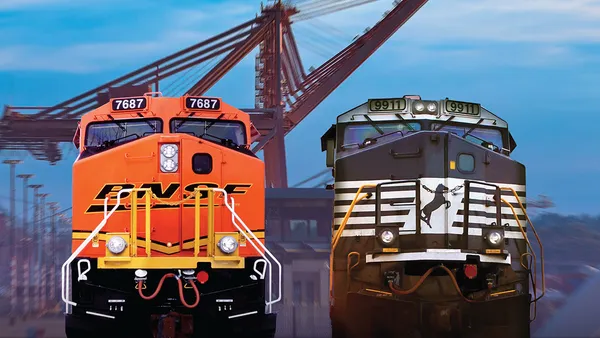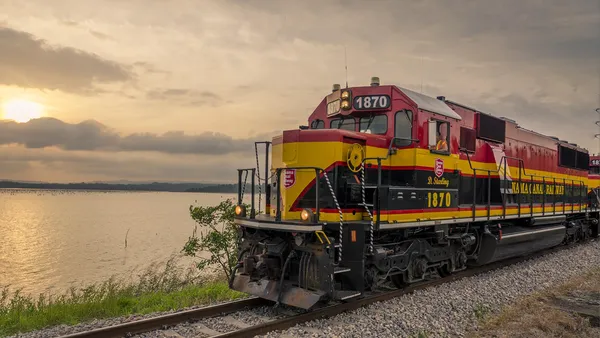Dive Brief:
- Vessel traffic resumed at the Port of New Orleans 6 a.m. CT Sunday, less than 24 hours after Barry made landfall as a Category 1 hurricane Saturday morning near Intracoastal City, Louisiana. The storm quickly weakened to a tropical storm soon after hitting land and by Monday morning had downgraded to a tropical depression. "Early preparation and communication," helped to minimize damage at the port, according to a U.S. Coast Guard press release.
- The Federal Motor Carrier Safety Administration (FMCSA) suspended hours of service (HOS) regulations in 21 states beginning Friday for 30 days, to allow for swift aid to reach the region.
- Norfolk Southern resumed normal operations in the region Sunday with cargo 24-48 hours delayed, according to a railroad service alert. After warning customers its service would likely face disruptions before the weekend, BNSF and Kansas City Southern have not updated their service advisories.
Dive Insight:
Barry is now moving north, expected to bring rain to Arkansas, Missouri and beyond through Tuesday.
Hurricane Barry "could have played out very differently," said Louisiana Governor John Bel Edwards to reporters Sunday. Barry still threatens part of Louisiana, West Texas and Arkansas, and tornado watches are in effect in southeastern Louisiana, Mississippi, western Alabama, eastern Arkansas and western Tennessee. But the storm did its worst over the weekend with no weather-related fatalities, according to the governor.
Flooding is still a threat in some areas for the rest of Monday, according to the National Weather Service.
Some roads remain closed in the areas that received the most rain.
Damage assessments will proceed on the coming days, but the initial good news is that the levees, already stressed by 150 days at flood levels, held.














